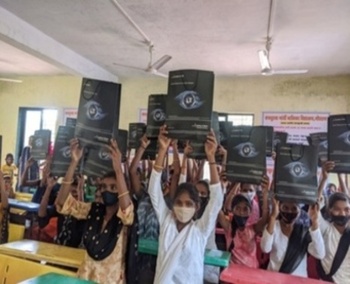Solar Power and Agriculture: 9 Ways to Boost Productivity and Income

The sun shines across the globe, it gives life to almost everything that is alive; a single plant is able to change from a seed to a tree, because it receives nutrients from the soil and of course, the power to grow from the sun. It is interesting to note that today, the use of solar energy in agriculture is being explored.
Solar power is reshaping the agricultural landscape, offering sustainable energy solutions that benefit not only the farmers, but also the
environment. There is a reduction in energy costs, an increase in productivity and opportunities for sutainable income generation partnered with food security.
It is in view of all these advantages that a solar NGO in India like Project Chirag is working towards making solar energy more commonplace to small and marginal farmers.

The top 10 solar energy uses in agriculture
When solar energy is promoted and adopted, it actually shows a recognition of the potential this renewable source of energy has to empower
rural farmers and support food security. Here are just some ways in which solar power is boosting productivity and income in agriculture:
- Reduction in energy costs – In regions where electricity is scarce or erratic, energy and fuel costs tend to be high and often become a
burden on the farmers. Solar power offers a cost-effective solution by providing free energy once the initial installation is complete. The energy hence generated can be used to power various on-farm activities, such as irrigation, lighting, machinery, and cold storage.
Notably, NGOs like Project Chirag are also working in the same direction. - Powering irrigation systems – One of the most direct and impactful uses of solar energy in agriculture is powering irrigation systems.
Solar-powered water pumps replace expensive and polluting diesel engines, offering a reliable and clean alternative for farmers. When the cost of irrigation is reduced, farmers can divert that amount to grow more crops, increase yields, and extend the growing season, leading to higher income. It also allows for perennial farming and reduced fallow land, ensuring farmers are no longer dependent on rain
fed agriculture. - Enabling off grid farmers – In India, many rural farmers are completely off grid; which means that they struggle for access to conventional electricity sources. For all such farmers, solar power is truly a lifeline! At Project Chirag, we work with local farmers and communities to set up solar panels, which can help generate electricity for not only their homes and schools, but also use the same solar energy for agriculture as well.
- Promoting sustainability – Without a doubt, sustainability and solar energy are interlinked and when there is a push towards more eco-friendly methods of farming, solar energy is front and centre. Solar-powered tools, such as submersible pumps, electric tractors and ploughs, reduce the need for harmful chemicals and fuels, promoting sustainable farming practices that preserve soil health and
biodiversity. By educating farmers on the long-term benefits of solar power, there is an effort to build resilient agricultural systems that
can thrive in a changing climate. - Crop diversity – When there is a consistency in irrigation, there is the chance to grow more crops and adopt crop rotation; when there is reliable water supply, farmers can diversify into high-value crops like fruits, vegetables, and herbs, which often fetch higher prices in
the market. By adopting solar irrigation systems, farmers can adopt crop diversification strategies that will not only boost their income but also enhance food security and environmental sustainability. - Food security – It is a simple fact; when there is a stable agricultural production, there is food security. So, when there is usage of solar energy for agriculture, farmers can better manage their water resources, they can protect their crops from drought, and they can also store perishable goods more efficiently. This kind of stability is all the more important for farmers who are in regions that are highly susceptible to climate change. So, imagine an area where flooding is common or droughts are regular, this kind of food security is essential.
- Better for the environment – Traditionally, the energy sources in the field of agriculture would be diesel-powered pumps and
generators, which are some of the highest contributors to greenhouse gas emissions. By making the switch to solar power, farmers can
reduce their carbon footprint and contribute to global efforts to combat climate change. - Empowering women – This might come as a surprise to many, but solar technology is also helping empower women in agriculture. Solar-powered equipment, such as grain mills and water pumps, reduces the manual labor and time required for farming activities, freeing up time for women to engage in other economic activities or education. With solar powered water pumps, women also need to spend less time walking to and fro from water sources, carrying pots of water.
- Crop drying and storage – Usage of sunlight to dry crops and grains has been practiced for the longest time, but now that solar power has arrived, farmers set up solar dryers, which allow them to dry their grains faster and in a more efficient way. Similarly for cold storage units; solar-powered cold storage units can help preserve crops and reduce waste. Since small hold farmers farmers tend to be in remote location, both processes allow them to extend the life of their product, until they are able to take them to market.

As one of the grassroot solar NGO based out of Mumbai and implementing projects all across thecountry, we, at Project Chirag are working towards make solar energy a lot more accessible – from lighting homes to bringing clean water to villages, we envision a green nation in our future!!


